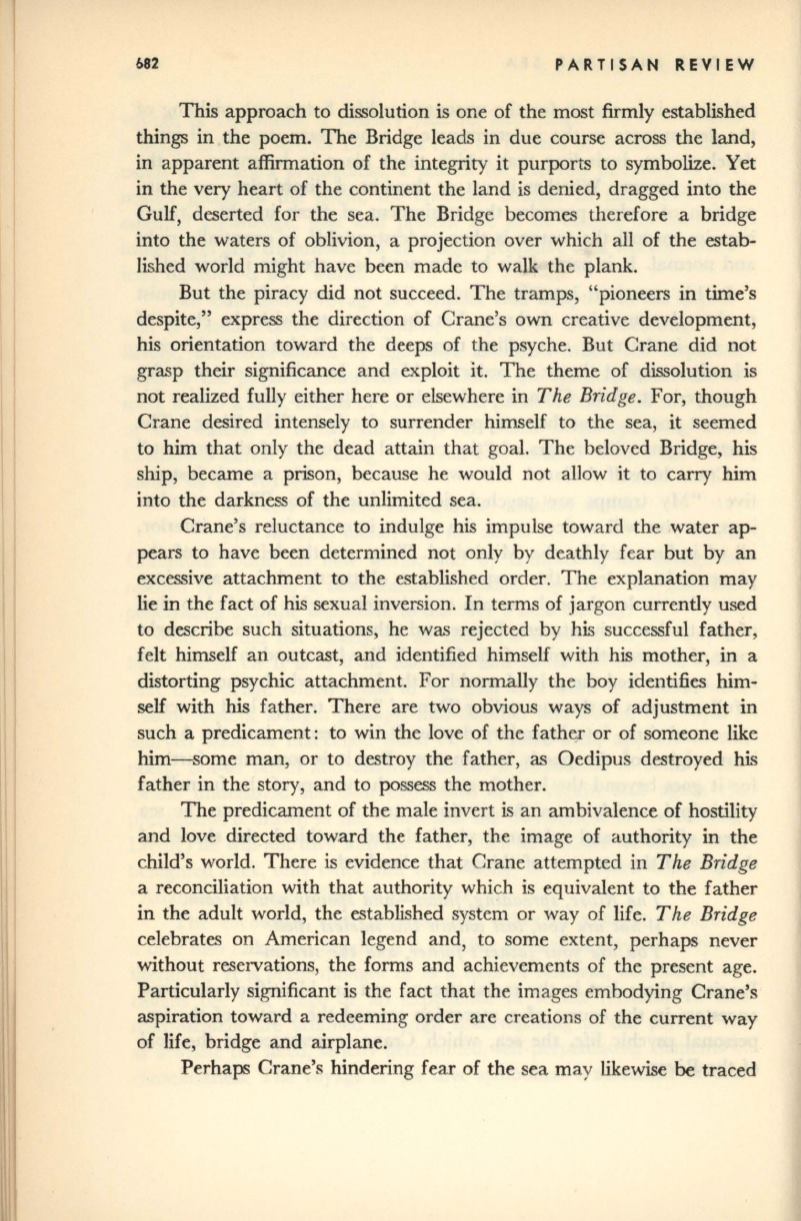
682
PARTISAN REVIEW
This approach to dissolution is one of the most firmly established
things in the poem. The Bridge leads in due course across the land,
in apparent affirmation of the integrity it purports to symbolize. Yet
in the very heart of the continent the land is denied, dragged into the
Gulf, deserted for the sea. The Bridge becomes therefore a bridge
into the waters of oblivion, a projection over which all of the estab–
lished world might have been made to walk the plank.
But the piracy did not succeed. The tramps, "pioneers in time's
despite," express the direction of Crane's own creative development,
his orientation toward the deeps of the psyche. But Crane did not
grasp their significance and exploit it. The theme of dissolution is
not realized fully either here or elsewhere in
The Bridge.
For, though
Crane desired intensely to surrender himself to the sea, it seemed
to him that only the dead attain that goal. The beloved Bridge, his
ship, became a prison, because he would not allow it to carry him
into the darkness of the unlimited sea.
Crane's reluctance to indulge his impulse toward the water ap–
pears to have been determined not only by deathly fear but by an
excessive attachment to the established order. The explanation may
lie in the fact of his sexual inversion. In terms of jargon currently used
to describe such situations, he was rejected by his successful father,
felt himself an outcast, and identified himself with his mother, in a
distorting psychic attachment. For normally the boy identifies him–
self with his father. There are two obvious ways of adjustment
in
such a predicament: to win the love of the fathq or of someone like
him-some man, or to destroy the father, as Oedipus destroyed his
father in the story, and to possess the mother.
The predicament of the male invert is an ambivalence of hostility
and love directed tow.ard the father, the image of authority in the
child's world. There is evidence that Crane attempted in
The Bridge
a reconciliation with that authority which is equivalent to the father
in the adult world, the established system or way of life.
The Bridge
celebrates on American legend and, to some extent, perhaps never
without reservations, the forms and achievements of the present age.
Particularly significant is the fact that the images embodying Crane's
aspiration toward a redeeming order are creations of the current way
of life, bridge and airplane.
Perhaps Crane's hindering fear of the sea may likewise
be
traced


